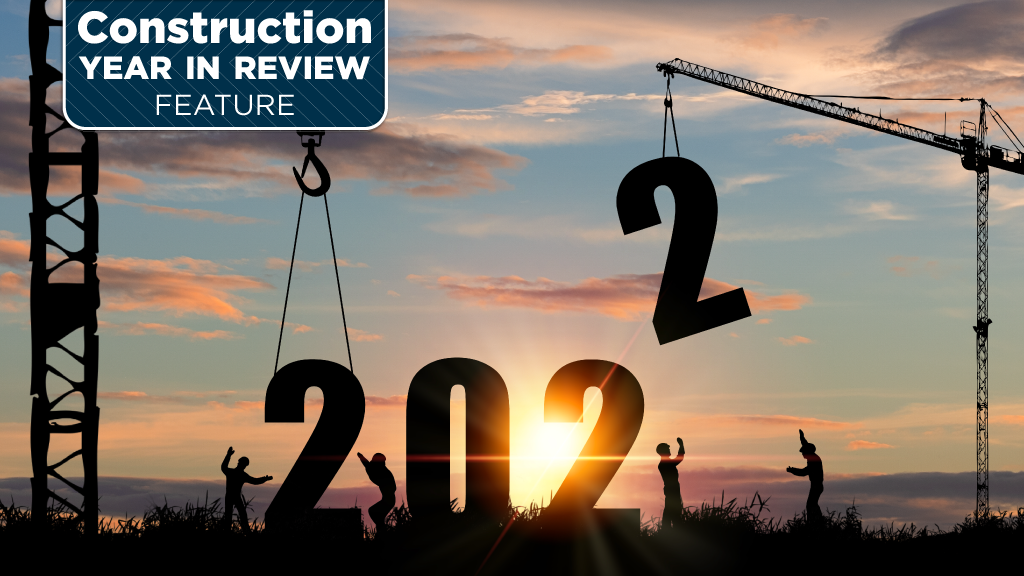In an analysis of the overall state of the Canadian economy and the construction sector, real estate and investment management firm JLL Canada says this country is in the midst of an “historic building boom”.
However, JLL’s Canadian construction outlook also warns there are many obstacles to overcome such as constricted supply chains, volatile material prices, and construction labour shortages.
Key highlights of the report include the fact that Ottawa, Montreal, and Toronto have experienced the highest increases in non-residential construction prices and that residential and industrial construction accounted for record new building permits.
Driving the boom in Canada — as well as other nations — are factors such as low interest rates, pent up savings, the desire for more living space, and the shift in consumption away from services to goods.
After a dip in the early months of the pandemic, the value of building permits has “roared back”, reaching a peak of $11 billion in the second quarter of the year. This building activity is occurring in three main sectors: residential, industrial, and commercial office expansion.
Residential construction is booming for all types of housing ranging from single family homes to high rise condominiums, while new supplies of rental apartment housing are coming on stream to accommodate growing populations in cities, says the study.
“Added together, housing starts across Canada have never been higher.”
In the industrial sector, low vacancy rates and the demand for physical goods that actually have to be stored in warehouses are the underpinnings for the current construction of 36 million square feet of industrial space, which the study describes as a: “record for Canada.”
The word ‘record’ is also used to emphasize the amount of commercial building construction underway in Toronto Montreal, Vancouver, and Ottawa. Before the pandemic, those four cities had a low office vacancy rate and that was the incentive for developers to construct new towers. Some of those projects have now been completed.
“There remains 19 million square feet of office space under construction across Canada, at a time when the future of the workplace remains uncertain.”
Factors creating that uncertainty include bottlenecks in the global supply chain, stemming from an accelerated demand for building materials.
“Supply chains are so globally connected that disruptions in one part of the world have consequences in another,” says the study.
It points out that shipping containers now take 73 days to cross the Pacific Ocean compared to the 20–30-day period before the pandemic.
Much of that delay stems from increased dock waiting times.
Those delays have resulted in cost increases for all builders, says the report, citing the StatCan Canadian Construction Index which shows overall project costs have increased 8.3 per cent for non-residential construction and a ‘jarring’ 20.3 per cent for residential construction in the period from the third quarter of 2020 to the corresponding period in 2021.
Rising material and labour costs are adding a significant premium for builders, with estimated 20 to 40 per cent of additional costs compared to similar projects five years ago, it says.
Highlighting those figures in somewhat of a lead-in to an examination of building material price volatility in high, medium, and load categories and how that impacts construction.
“Volatility is calculated as the standard deviation of the mean monthly index over the last three years,” explains JLL Canada’s executive vice president and national lead for project and development services, Dave Lehto.
The more volatile the material price, the more chance that material prices will change during the bid period and, as result, some, some trades are not willing to hold their prices for the typical 60 or 90 day price validity periods, he explains.
Because it has experienced the most price volatility of nine different materials scrutinized by JLL, steel is listed in the high volatility sector. So also is lumber, for reasons that include a strong housing market — thus an increased need for lumber — and supply disruptions. A major reason was the shutdown of lumber mills at the height of the pandemic.
Asked if escalating lumber prices will have an impact on the movement towards mass timber construction, Lehto said the price of mass timber construction is somewhat impacted by price fluctuations. But bigger impact stems from a limited number of mass timber designers and suppliers to serve an ever increasing number of developers committed to sustainable and net zero construction.
“It (the demand for mass timber) is putting a strain on a small group of suppliers.”
For those developers and contractors using copious amounts of concrete, there is positive news.
There have been few supply disruptions, a condition Lehto attributes to the abundant supply of sand, gravel, and cement available in the most populous parts of Canada, JLL expects construction prices to ease in 2022, in part, because of improvements in the supply chain.
New measures by China to regulate the economy and the construction industry will also temper commodity price spikes.




Recent Comments